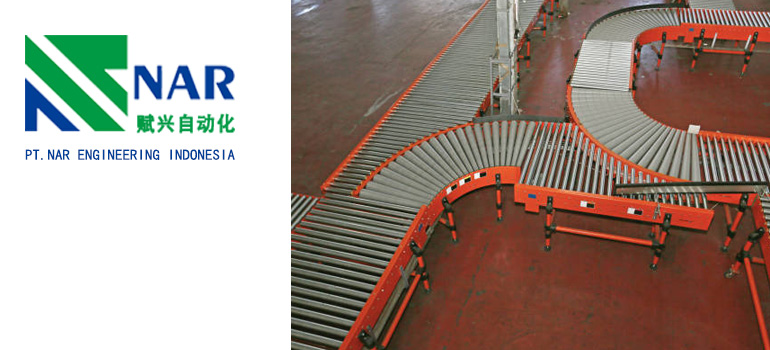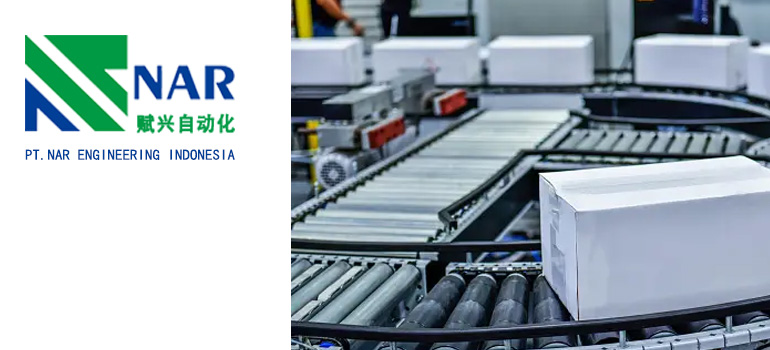Summary:
How to Choose the Best Conveyor Belt Roller Accessories for Your Needs
What are Conveyor Belt Roller Accessories
Factors to Consider When Choosing Conveyor Belt Roller Accessories
Types of Conveyor Belt Roller Accessories
How to Assess Quality and Reliability
Conveyor belt roller accessories play a crucial role in the smooth operation and efficiency of conveyor systems across various industries. These accessories are essential components that support and enhance the performance of conveyor belts, ensuring optimal functionality and minimal downtime.
What are Conveyor Belt Roller Accessories?
Conveyor belt roller accessories encompass a range of components designed to complement the main conveyor system. These include rollers, bearings, scrapers, skirting, guides, guards, and other specialized parts. Each accessory serves a specific purpose, such as facilitating smooth material flow, minimizing wear and tear, or enhancing safety.
Selecting the appropriate conveyor belt roller accessories is crucial for maintaining operational efficiency and reducing maintenance costs. The right accessories can prolong the lifespan of conveyor systems, improve product handling, and ensure workplace safety. Conversely, choosing incompatible or low-quality accessories may lead to frequent breakdowns, decreased productivity, and increased operational costs.
When evaluating conveyor belt roller accessories, several factors should be considered. These include durability, material quality, compatibility with existing equipment, ease of installation, maintenance requirements, and the specific operational environment. By carefully assessing these factors, businesses can make informed decisions that optimize their conveyor system’s performance and longevity.
Factors to Consider When Choosing Conveyor Belt Roller Accessories

When choosing conveyor belt roller accessories, several key factors should be carefully considered to ensure optimal performance and efficiency:
Durability and Material Quality
Material Composition: Assess the materials used in the accessories (e.g., rollers, bearings, scrapers). Opt for high-quality materials such as stainless steel or durable polymers that can withstand operational demands and environmental conditions.
Resistance to Wear and Tear: Evaluate the accessories’ resistance to abrasion, impact, and corrosion. Accessories that maintain their integrity over extended periods reduce downtime and maintenance costs.
Compatibility with Existing Systems
Fit and Integration: Ensure that the accessories are compatible with your existing conveyor system components. This includes dimensions, mounting mechanisms, and operational specifications. Compatibility facilitates seamless installation and operational continuity.
Interoperability: Consider how well the accessories interact with other components like belts, pulleys, and motors. Compatibility enhances overall system efficiency and performance.
Performance and Efficiency Benefits
Enhanced Material Handling: Look for accessories that improve material flow and handling efficiency. Features like low-friction surfaces on rollers or effective scrapers can minimize material spillage and ensure smooth operation.
Energy Efficiency: Evaluate accessories that contribute to energy savings, such as reduced friction or optimized roller design. Energy-efficient accessories can lower operational costs over time.
Maintenance Requirements
Ease of Maintenance: Assess the maintenance needs of the accessories. Choose components that are easy to inspect, clean, and service to minimize downtime and maximize uptime.
Longevity and Reliability: Select accessories known for their reliability and longevity. Accessories with a track record of durability and minimal maintenance requirements offer long-term value.
Safety and Regulatory Compliance
Safety Features: Prioritize accessories that enhance workplace safety. This includes features like guards or safety mechanisms that prevent accidents and comply with industry safety standards.
Regulatory Compliance: Ensure that the accessories meet relevant industry regulations and standards. Compliance ensures operational legality and safety adherence.
By carefully considering these factors when choosing conveyor belt roller accessories, businesses can make informed decisions that optimize system performance, reduce maintenance costs, and enhance overall operational efficiency.
Types of Conveyor Belt Roller Accessories
When it comes to conveyor belt systems, various types of roller accessories are crucial for ensuring smooth operation and efficient material handling. Here are some key types of conveyor belt roller accessories:
Rollers and Bearings
Idle Rollers: These rollers support the conveyor belt when it is not actively conveying material, reducing friction and wear.
Drive Rollers: Responsible for moving the conveyor belt, these rollers are powered by motors and transmit motion to the belt.
Impact Rollers: Designed to absorb impact and protect the conveyor belt from damage caused by large or heavy objects.
Scrapers and Skirting
Belt Scrapers: Remove residual material adhering to the conveyor belt to prevent buildup and ensure clean operation.
Skirting Rubber: Installed along the sides of the conveyor belt to contain material and prevent spillage, enhancing operational efficiency.
Guides and Guards
Guide Rails: Direct the movement of materials on the conveyor belt, ensuring proper alignment and preventing misalignment or spillage.
Safety Guards: Protect workers from moving parts and pinch points on the conveyor system, enhancing workplace safety.
Impact Beds and Slider Beds
Impact Beds: Absorb impact and cushion the conveyor belt during loading, reducing wear and extending belt life.
Slider Beds: Provide a smooth surface for the conveyor belt to slide on, minimizing friction and energy consumption.
Pulleys and Drive Components
Pulleys: Redirect the conveyor belt and provide tension to ensure proper tracking and alignment.
Drive Components: Including motors, gearboxes, and couplings, these components transmit power to the conveyor belt for movement.
How to Assess Quality and Reliability
Assessing the quality and reliability of conveyor belt roller accessories is crucial to ensuring optimal performance and minimizing operational disruptions. Here’s a structured approach to evaluate these aspects:
Reviews and Testimonials
Customer Feedback: Read reviews from other users or seek testimonials from industry peers regarding the accessories’ performance, durability, and reliability.
Vendor Reputation: Evaluate the reputation of the manufacturer or vendor supplying the accessories. Look for certifications, awards, or industry recognition that indicate reliability.
Warranty and Service Support
Warranty Coverage: Review the warranty terms offered by the manufacturer. A comprehensive warranty indicates the manufacturer’s confidence in their product’s quality.
Service Availability: Assess the availability of technical support and service options. A responsive support network can minimize downtime and resolve issues promptly.
Performance Specifications
Technical Data: Examine detailed technical specifications provided by the manufacturer. This includes load capacity, operating temperature range, and material composition.
Performance Testing: Inquire about any performance testing conducted on the accessories. Look for certifications or compliance with industry standards (e.g., ISO, ANSI) that validate performance claims.
Material Quality and Durability
Material Selection: Evaluate the materials used in manufacturing the accessories. High-quality materials like stainless steel or robust polymers enhance durability and resistance to wear.
Longevity: Consider the expected lifespan of the accessories under typical operating conditions. Long-lasting accessories reduce replacement frequency and maintenance costs.
Industry Standards and Compliance
Regulatory Compliance: Ensure that the accessories meet relevant industry standards and regulatory requirements (e.g., safety standards). Compliance ensures operational safety and legality.
Quality Certifications: Look for certifications such as ISO 9001 (quality management) or ISO 14001 (environmental management) that demonstrate adherence to rigorous quality standards.
By systematically assessing these factors, businesses can make informed decisions when selecting conveyor belt roller accessories, ensuring they meet quality standards, provide reliable performance, and contribute to efficient operations.

